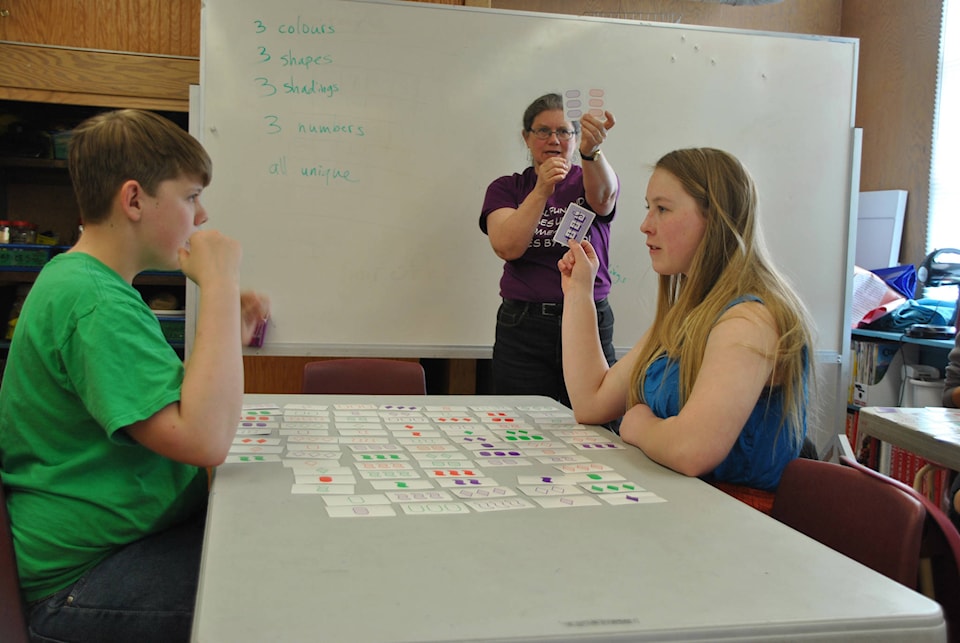Grade 8 students at Maranatha Christian School were learning math skills in a whole new way last Friday.
They were learning to play a game called Set.
“I am interested in logic, patterns, and puzzles,” said Susan Milner, a retired university professor and Science World volunteer who shares math puzzles and games with students in schools around the province.
“Even students who might not find standard math classes very engaging enjoy doing puzzles, which are really all about problem solving,” Milner said. “Then they can show just how logically they can think.”
She said Set has become such a popular game in recent years that the New York Times publishes new Set games every day.
Set theory is a branch of mathematical logic that studies sets, which informally are collections of objects.
The Set card game was designed by Marsha Falco in 1974 and evolved out of a coding system that she used in her job as a geneticist.
The game was published by Set Enterprises in 1991 and won the American Mensa’s Mensa Select award that year and placed ninth in the 1995 Deutscher Spiele Preis.
The deck for playing Set consists of 81 cards varying in four features: number (one, two, or three); symbol (diamond, squiggle, oval); shading (solid, striped, or open); and colour (red, green, or purple).
Each possible combination of features appears precisely once in the deck allowing for literally thousands of game combinations.
“I love this game because it has only one rule, which people can figure out from examples, and then there are so many variations you can play,” Milner said.
